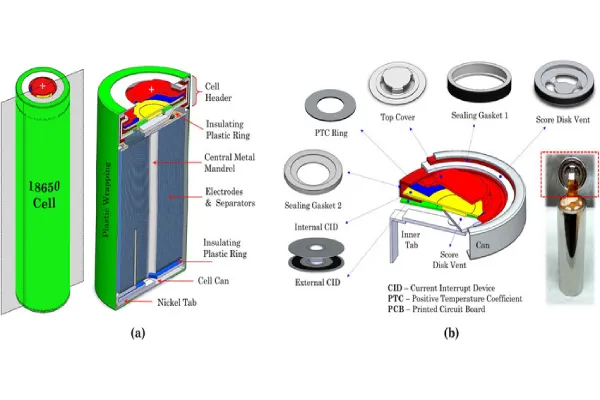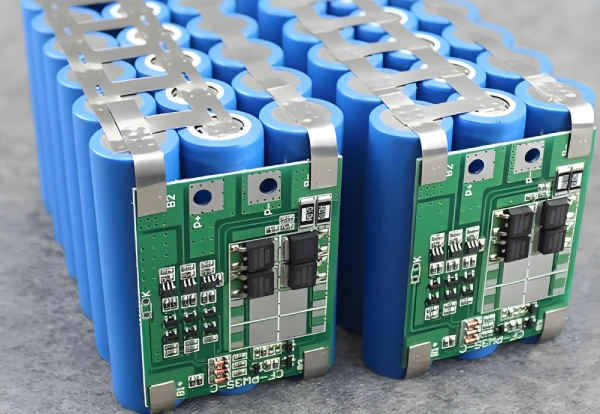What Is a Protected 18650 Battery
A protected 18650 battery is a standard lithium-ion “18650” cell (18 mm in diameter, 65 mm in length) with an extra layer of safety: a miniature protection circuit board (PCB) hidden under the wrapper. This circuit constantly monitors the battery’s voltage and current. If the battery is overcharged, over-discharged, or short-circuited, the PCB instantly cuts power — protecting both the cell and your device.

How the 18650 Protection Circuit Works
The PCB is like a tiny built-in guardian. It handles three key tasks: stopping charging when the cell reaches about 4.2 V, disconnecting the battery if it drops too low (around 2.5 V), and cutting power during a short circuit or current spike. This real-time protection reduces risks and extends the usable life of the cell.
Body Length Matters
Because of the added circuit board, protected cells are slightly longer — usually 68–70 mm instead of the standard 65 mm. That extra length can cause fit issues in compact devices or battery holders, so always check your device’s battery compartment size before purchasing.
Price Point: Paying a Little More for Safety
Adding a protection circuit does make the battery a bit more expensive, but the extra cost usually pays off with improved safety, longer lifespan, and reduced risk of damage. For most everyday uses, this is a smart investment.
Button-Top vs Flat-Top
Most protected 18650s come as button-top versions, which are ideal for devices with spring contacts like flashlights and headlamps. Flat-top cells are often chosen for tightly packed battery packs or devices with strict size constraints. If you use flat-top unprotected cells, make sure your pack has its own battery management system.
When to Choose a Protected 18650
Choose protected batteries if your device does not include built-in low-voltage or short-circuit protection, if you are new to lithium-ion batteries, or if you simply want a safer, plug-and-play solution.
Unprotected batteries make sense when you need high current output, must fit within strict length limits, or already have a robust BMS managing the pack.

Protected vs Unprotected at a Glance
| Feature | Protected 18650 | Unprotected 18650 |
|---|---|---|
| Over-charge cutoff | ✅ Yes | ❌ No |
| Over-discharge cutoff | ✅ Yes | ❌ No |
| Short-circuit safety | ✅ Yes | ❌ No |
| Length | ~68–70 mm | ~65 mm |
| Safety Level | High | Low (depends on device) |
| Price | Slightly higher | Lower |
| Best Use | Flashlights, DIY, everyday electronics | Power tools, packs with BMS |
This table makes it clear: protected cells are built for safety and convenience, while unprotected cells are best left for advanced users or systems with external protection.
Tips for Buying Protected 18650 Batteries
When shopping, check that the battery’s length is listed as 68–70 mm, verify that the listing clearly states over-charge, over-discharge, and short-circuit protection, and choose reputable brands such as Panasonic, Samsung, LG, Sony/Murata, Ufine, or Orbtronic. If you are buying for shipping or export, look for UN 38.3 and IEC 62133-2 certification for compliance and safe transport. Be cautious of unrealistic capacity claims — genuine 18650 cells max out around 3000–3500 mAh.
Final Thoughts
A protected 18650 battery offers peace of mind and reliable performance for most users. It’s slightly longer and more expensive, but the added safety and longer cycle life make it a smart choice for flashlights, DIY electronics, and everyday devices. If you’re unsure whether your device handles battery protection on its own, going with a protected cell is the safer bet.




